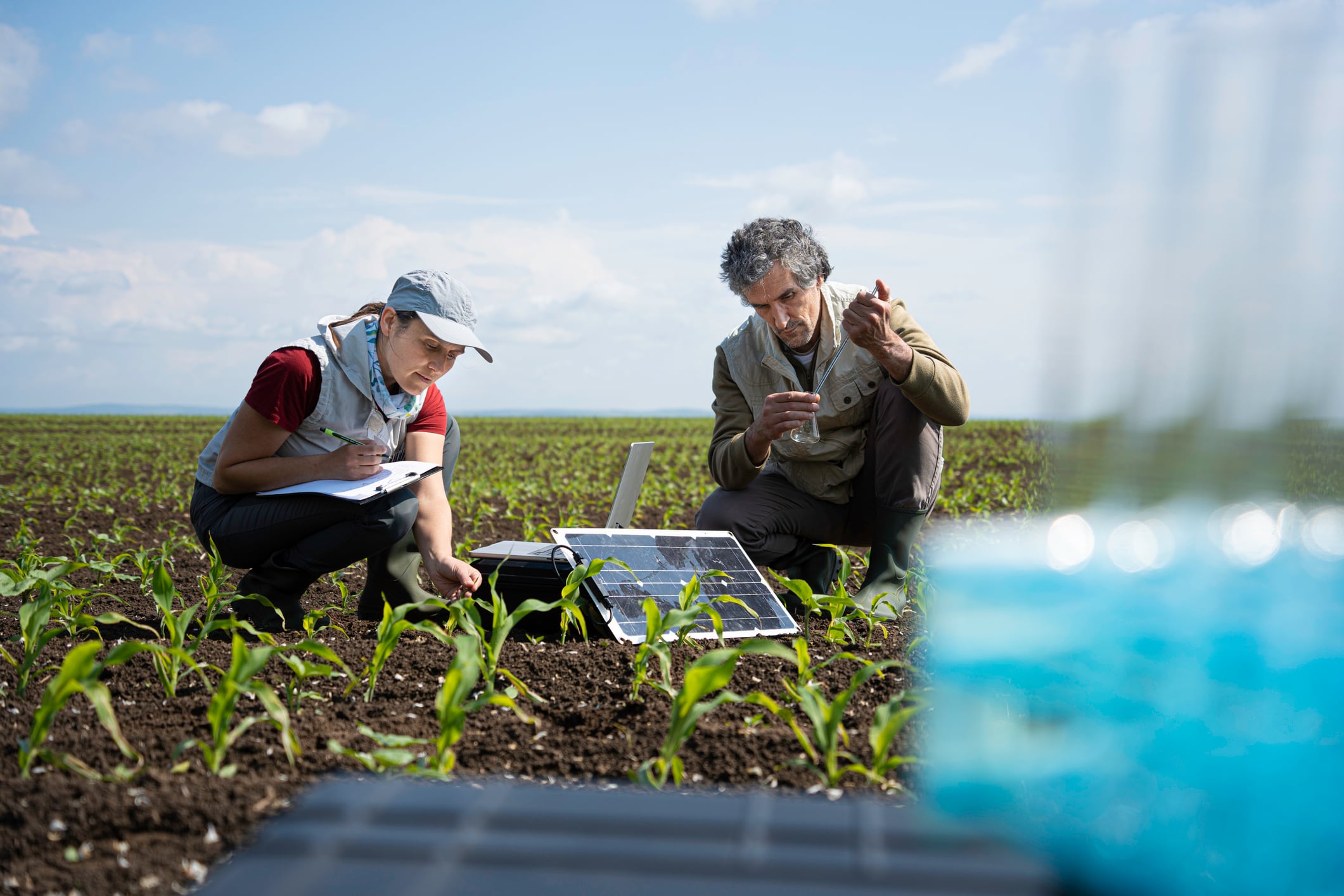The research – which brought together the expertise of over 40 academics, practitioners and farmers across the UK – concludes there’s good evidence that minimising bare soils, for example by growing cover crops on land over winter, has benefits for soil health and nature.
Brown fields of bare soil are a “common sight” throughout the UK in the winter months, the report notes. But keeping roots in the ground year-round, through practices like cover crops, can increase soil organic matter, enhance soil structure, improve nutrient availability and increase biodiversity.
The report also finds good evidence that integrating livestock into arable land benefits weed, disease and pest suppression.
But the evidence is weaker on the benefits of reducing soil disturbance with no-till or minimum-till under UK conditions, despite its prominence as a principle of regenerative agriculture.
A ‘whole systems’ approach needed
The report concludes that there is strong evidence that soil health and biodiversity can improve under regenerative agricultural practices in the UK – but a ‘whole systems’ approach is needed. Individual principals of regenerative agriculture used in isolation are rarely sufficient, though the authors do not wish to discourage farmers from taking up just a few new approaches.
“There are five principles of regenerative agriculture but there’s no one principle that delivers clear change on its own,” says Dr Roy Neilson, soil ecologist at the James Hutton Institute and one of the lead authors of the report.
“To achieve meaningful change requires a good understanding of the context of the individual farming system. When possible, multiple principles ideally need to be adopted.”
New tech ‘critical’
Advancing technologies and experimentation will also be vital in this transition, says Professor Nicola Randall at Harper Adams University, also a lead author of the report.
“There’s a perception that regenerative agriculture or nature friendly farming is going backwards, rediscovering past ways of farming,” she says. “In actual fact, there’s a lot of exciting new technology and developments involved. The movement is very much forward looking.”
Examples, she told AgTechNavigator, include using autonomous vehicles for strip cropping, employing drones for more precise pesticide spraying, developing cereal blends to help reduce inputs and boost yields, and using no-fence technologies to support integrating livestock.
But who pays?
But high upfront costs are regularly cited as a barrier for farmers wishing to switch to regenerative practices.
The status of the UK government’s Sustainable Farming Incentive (SFI) is currently up in the air. Farmers are therefore eying schemes that pay them a premium for growing to a set of standards. Wilfarmed, for example, pays farmers a premium for growing wheat according to its audited Regenerative Standards, which emphasise nature-friendly farming practices.
“I have looked at growing for them and their approach, to me, cuts muster,” said Douglas Christie, an agricologist and farmer at Durie Farms in Scotland.
Farmers are also investigating schemes from the likes of Agreena, Soil Capital, Regenerative Outcomes and the Green Farm Collective.
One of the recommendations of the report is that regenerative agriculture principles should be integrated into agri-environment policy.
“Agri-environment schemes have the potential to make regenerative agriculture economically viable,” says Jennifer Dodsworth at the University of Oxford. “However, the current transitional phase in agricultural policy within the UK, and the broader post-Brexit context, make it difficult to predict their long-term impact.”





